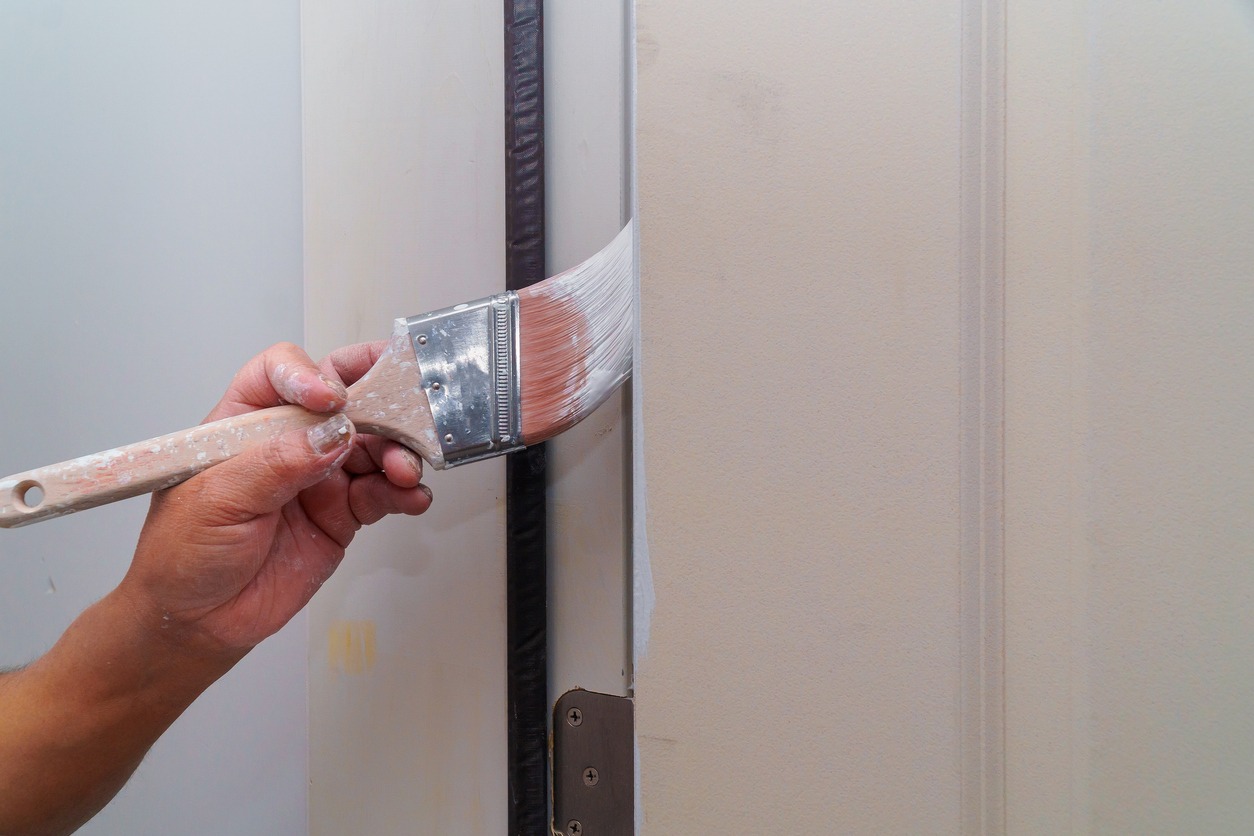Proper caulking is essential for commercial exteriors. It is a crucial barrier that seals and protects the building from moisture, air leaks, and weather-related damage. This simple step helps maintain structural integrity, prevent energy loss, and keep interiors comfortable. Plus, when caulking is done at the right time—ideally before painting—it can greatly enhance the longevity and appearance of your paint job.
Properly timed caulking ensures a smooth, even finish, helping the paint to adhere better and look great for years. Investing in quality caulking is a small step with significant benefits for your building’s upkeep and appeal!
Understanding the purpose of caulking
Understanding caulking is all about keeping your building in tip-top shape and looking its best! Here’s why it matters:
- Sealing for weather resistance: Caulking is like a weather shield for your building. It seals gaps and cracks, preventing moisture from sneaking in, blocking drafts, and keeping pests out. This factor is especially important in high-exposure commercial spaces where elements can cause wear and tear faster.
- Improving paint adhesion: A little caulk goes a long way in ensuring paint sticks better and lasts longer. When caulking is done right, it fills gaps, creating a smooth base for paint. It helps prevent those frustrating cracks and peels, keeping your building looking fresh and well-maintained over time.
- Enhancing aesthetic appeal: Smooth, caulked surfaces just look polished, giving a clean and professional finish. For commercial buildings, a neat appearance can boost the brand image, creating a welcoming first impression for customers and clients.
Caulking may seem like a small detail, but it plays a big role in making a building durable, low-maintenance, and aesthetically pleasing.
Why caulk before painting?
Caulking before painting is a small step that makes a big difference in your paint job’s quality and longevity! Here’s why:
- Better adhesion for paint: When you apply caulk first, the paint has a more even surface to stick to. It means your paint is securely gripping the entire surface, which can help it stay vibrant and last longer.
- Sealing gaps and imperfections: Caulk is a handy gap filler! It smooths over tiny cracks and seams, creating a flawless canvas for your paint. That way, you avoid little gaps that might ruin the polished look you’re aiming for.
- Ensuring moisture protection: Caulking also keeps moisture out of the picture. Sealing up cracks and edges with caulking helps prevent the water from sneaking under the paint, which could otherwise lead to unsightly bubbling and peeling.
A quick caulk before you paint keeps everything looking sharp and helps your hard work last longer!
Situations where caulking after painting might be needed
![]()
While caulking before painting is usually recommended, there are a few situations where caulking after painting can make a lot of sense.
- Touch-ups and final seals: Sometimes, after the main paint job, you notice small gaps or cracks that need a final touch-up. A little caulk post-painting can add an extra layer of protection and give a cleaner finish. This factor is especially handy around windows, doors, or trim, where a precise final seal helps keep everything looking smooth and polished.
- High-movement areas: For spots that see a lot of expansion and contraction, like around doors or windows that might shift with temperature changes, adding a flexible caulk over the paint helps keep the seal intact. Caulking can prevent cracks from forming over time, so things stay tight and look great for longer.
- Specialty applications: Caulking after painting can be a smart choice in regions with extreme weather or around complex architectural details like crown molding or intricate trim. These areas often need a little extra attention to ensure everything is sealed up well, keeping moisture and drafts out and preserving the paint job.
Choosing the right caulk for exterior commercial painting
Types of caulk
Different caulk types suit various applications, with silicone, acrylic, and elastomeric being popular choices for exterior commercial use.
- Silicone caulk offers excellent water resistance and flexibility, making it ideal for areas exposed to significant moisture. However, it may not always be paintable.
- Acrylic caulk is paintable and easy to apply but may lack flexibility over time.
- Elastomeric caulk is highly flexible and durable, making it well-suited for exterior applications that endure temperature fluctuations and structural movement.
Paintability
Choose a paintable caulk for areas that require painting. Some types, particularly silicone-based, resist paint adhesion, leading to a patchy finish or requiring additional preparation steps. Look for “paintable” labels on caulks to ensure seamless painting.
Durability and flexibility
Due to constant exposure to weather changes, high-quality, flexible caulk is necessary for commercial exteriors. The caulk must withstand expansion and contraction without cracking, as gaps can lead to water damage and reduced structural integrity over time. Elastomeric caulks are typically the most resilient for these requirements, offering long-lasting performance in various climates.
The caulking and painting process

The caulking and painting process is essential for creating a seamless and durable finish on walls, trim, and other surfaces. Here’s a step-by-step overview, including the importance of caulk drying time and considerations for working with a professional.
1. Step-by-step overview
- Cleaning surfaces: Start by cleaning surfaces to remove any dust, dirt, or loose paint. Proper cleaning ensures the caulk and paint adhere well and prevents peeling or cracking over time.
- Applying primer (if needed): If surfaces are bare, stained, or uneven, apply a primer. Primer improves paint adhesion and hides imperfections, providing a uniform finish.
- Caulking: This step improves a building’s appearance and helps protect it against moisture damage, insects, and air drafts.
- Painting: Once the caulk has fully dried, apply paint in smooth, even strokes. For best results, apply two coats, allowing the first to dry completely before adding the second.
2. Allowing for caulk dry time
- Importance of dry time: Caulk needs adequate drying time to cure properly. If painted over too soon, the paint may crack, bubble, or peel as the caulk contracts during curing. Most caulks need at least 24 hours to dry completely, though some fast-drying formulas can be ready in a few hours. Always check the manufacturer’s instructions for exact drying times.
- Checking for dryness: Test the caulk’s dryness by gently pressing it—if it feels firm to the touch without sticking, it’s ready for paint.
3. Working with a professional
- What are the benefits of hiring a commercial painting contractor? An experienced commercial painting contractor will ensure that the surfaces are properly prepared, caulked, and painted, adhering to industry standards for a long-lasting finish. Professionals understand the timing and techniques needed for high-quality results, and they’re skilled in selecting the best caulking and paint products for specific environments.
- Ensuring durability: Contractors know when to prime, how much caulk to use, and how long to wait before painting, which helps to prevent issues like cracking, peeling, or bubbling.
To caulk before or after painting? It depends!
Caulking before painting offers essential benefits, such as creating a smooth, sealed surface that enhances paint adhesion and protects against moisture. However, in specific cases, like minor touch-ups or filling small gaps that appear post-painting, caulking afterward can also be beneficial to ensure a finished, cohesive look.
The timing and choice of materials ensure a durable, weather-resistant exterior. Selecting high-quality caulk and paint appropriate for your building’s environment can prevent costly repairs and extend the lifespan of the paint job.
Contact us!
Custom Painting, Inc. can assess your commercial building’s unique needs and recommend a comprehensive approach to exterior painting and caulking, ensuring quality, longevity, and an attractive finish.
If you’re a business owner seeking to improve the look and quality of your commercial building, consult our professional team today! Call us at 925-294-8062 or message us here for a free job quote.

